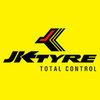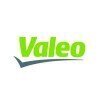Filter interviews by
Lucas-TVS Senior Quality Engineer Interview Questions, Process, and Tips
Lucas-TVS Senior Quality Engineer Interview Experiences
1 interview found
I applied via Recruitment Consulltant and was interviewed before Oct 2021. There were 4 interview rounds.

(6 Questions)
- Q1. Brief about yourself
- Ans.
I am an experienced Senior Quality Engineer with a strong background in quality assurance and process improvement.
Over 10 years of experience in quality engineering
Expertise in developing and implementing quality control processes
Proficient in conducting audits and inspections to ensure compliance
Skilled in analyzing data and identifying areas for improvement
Strong knowledge of quality standards and regulations
Excellen
- Q2. Why you want to change job
- Ans.
I am seeking new challenges and opportunities for growth in my career as a Senior Quality Engineer.
Seeking new challenges and opportunities for growth
Looking for a more dynamic and innovative work environment
Desire to work with a larger team and learn from experienced professionals
Want to contribute my skills and expertise to a company that aligns with my values and goals
- Q3. Your family background
- Ans.
I come from a diverse family background with a mix of cultures and traditions.
My parents are from different countries, which has exposed me to different languages and customs.
Growing up, I celebrated holidays and traditions from both sides of my family.
Having a diverse family background has taught me to appreciate and respect different perspectives and ways of life.
- Q4. Do you know about motors
- Ans.
Yes, I have knowledge about motors.
I have experience working with various types of motors such as AC, DC, and stepper motors.
I am familiar with motor control systems and their components such as drivers, encoders, and sensors.
I have worked on projects involving motor testing and troubleshooting.
I have knowledge of motor specifications and their applications in different industries.
I am proficient in using tools such as...
- Q5. How long will you work for us
- Ans.
I am committed to working for the company for the long term and contributing to its success.
I am looking for a stable and fulfilling career, and I believe this position aligns with my long-term goals.
I am excited about the opportunity to make a significant impact in this role and grow professionally within the company.
I am committed to continuous learning and development, and I believe this company provides the right e...
- Q6. Your current ctc and expectation
- Ans.
I prefer to discuss the salary range for this position before disclosing my current ctc and expectation.
I am open to negotiation based on the responsibilities and requirements of the role.
I am looking for a competitive salary package that aligns with my experience and skills.
I am willing to consider other benefits such as health insurance, retirement plans, and vacation time.
I am confident that we can come to a mutuall
(2 Questions)
- Q1. What is the difference between accuracy and precision
- Ans.
Accuracy refers to how close a measured value is to the true value, while precision refers to how close multiple measurements are to each other.
Accuracy is the degree of closeness between a measured value and the true value.
Precision is the degree of closeness between multiple measurements of the same quantity.
Accuracy is related to systematic errors, while precision is related to random errors.
Accuracy can be affected...
- Q2. What is PPAP and SPC
- Ans.
PPAP stands for Production Part Approval Process and SPC stands for Statistical Process Control.
PPAP is a standardized process in the automotive industry to ensure that all parts meet customer requirements.
SPC is a method of monitoring and controlling a process by analyzing data to identify and reduce variation.
PPAP includes documentation such as design records, engineering change orders, and test results.
SPC involves ...
(1 Question)
- Q1. Do you know about motors
- Ans.
Yes, I have knowledge about motors.
I have studied the principles of motors and their applications.
I have worked with motors in my previous job as a Quality Engineer.
I am familiar with different types of motors such as AC motors, DC motors, and stepper motors.
I have experience in testing and validating motors for quality and performance.
I am aware of the safety precautions that need to be taken while working with motors
Interview Preparation Tips
- Motors
- Alternator
- PPAP
- GD&T
- SPC
- Apqp
- NPD
- 7Qc
- SGA
- Qit
- 8D
Top trending discussions






Interview questions from similar companies

I applied via Naukri.com and was interviewed in Dec 2020. There were 3 interview rounds.
Interview Questionnaire
1 Question
- Q1. I am b.tech camplite in mechanical engineering in 2019 pass out if any requirement in quality engineer
Interview Preparation Tips

Interview Questionnaire
1 Question
- Q1. Genral diploma mechanical Related question

I applied via Recruitment Consultant and was interviewed before Jan 2021. There was 1 interview round.
Interview Questionnaire
3 Questions
- Q1. How many level in ppap
- Ans.
There are 5 levels in PPAP (Production Part Approval Process).
PPAP has 5 levels: Level 1, Level 2, Level 3, Level 4, and Level 5.
Each level represents a different stage of the PPAP process.
Level 1 includes documentation submission, while Level 5 involves customer approval.
The higher the level, the more comprehensive the PPAP requirements become.
PPAP is used to ensure that suppliers meet the quality standards of their c
- Q2. Difference between cp and cpk
- Ans.
Cp measures the capability of a process to meet specifications, while Cpk measures the capability of a process to meet specifications considering centering.
Cp is a short-term capability index, while Cpk is a long-term capability index.
Cp considers only the spread of the process, while Cpk considers both the spread and the centering of the process.
Cp is calculated using the formula Cp = (USL - LSL) / (6 * standard devia...
- Q3. What is capa
- Ans.
CAPA stands for Corrective and Preventive Action. It is a systematic approach to identify, investigate, and resolve quality issues.
CAPA is a key component of quality management systems.
It involves identifying the root cause of a problem, implementing corrective actions to address the immediate issue, and preventive actions to prevent recurrence.
CAPA processes typically include steps like problem identification, investi...
Interview Preparation Tips

Interview Questionnaire
2 Questions
- Q1. No one Question asked.
- Q2. It is Direct joining because of Training.

I appeared for an interview in Jan 2025.
(3 Questions)
- Q1. What is 5 core tool , 7 qc tool , 8 D , why why analysis
- Ans.
Core tools and techniques used in quality engineering include 5 core tools, 7 QC tools, 8D methodology, and the Why-Why analysis.
5 Core Tools: APQP, PPAP, FMEA, MSA, SPC
7 QC Tools: Check sheets, Pareto charts, Cause-and-effect diagrams, Histograms, Scatter diagrams, Control charts, Flowcharts
8D Methodology: Eight disciplines problem solving approach used to identify, correct, and prevent recurring problems
Why-Why Analy...
- Q2. What is the role of company in DWM
- Ans.
The role of a company in Design for Manufacturability (DWM) is to ensure that products are designed in a way that makes them easy and cost-effective to manufacture.
Ensuring that product designs are optimized for efficient manufacturing processes
Collaborating with design and manufacturing teams to identify and address potential manufacturing challenges early in the design phase
Implementing design guidelines and best pra...
- Q3. What is MSA and SPC explain
- Ans.
MSA stands for Measurement System Analysis and SPC stands for Statistical Process Control.
MSA is a method used to assess the measurement system variation to ensure data accuracy.
SPC is a method used to monitor and control a process through statistical analysis.
MSA includes Gage R&R studies to evaluate the measurement system's repeatability and reproducibility.
SPC involves using control charts to detect any variatio...
(2 Questions)
- Q1. What is process quality
- Ans.
Process quality refers to the level of consistency, accuracy, and effectiveness in the execution of a particular process.
Process quality is about ensuring that a specific process consistently meets the desired standards and requirements.
It involves identifying and eliminating defects, errors, and variations in the process to improve overall quality.
Process quality can be measured using metrics such as defect rates, cyc...
- Q2. 8D explain.
- Ans.
8D is a problem-solving methodology used in quality management to identify, correct, and prevent recurring problems.
8D stands for 8 disciplines, each representing a step in the problem-solving process
Steps include defining the problem, forming a team, identifying root causes, implementing corrective actions, and preventing recurrence
Example: A manufacturing company uses 8D to address a recurring defect in their product
Interview Preparation Tips

I applied via Walk-in and was interviewed in Jan 2022. There was 1 interview round.
(12 Questions)
- Q1. What are your salary expectations?
- Q2. What is your family background?
- Q3. Share details of your previous job.
- Q4. Why should we hire you?
- Q5. Why are you looking for a change?
- Q6. Where do you see yourself in 5 years?
- Q7. What are your strengths and weaknesses?
- Q8. Tell me about yourself.
- Q9. Ok 👌 all question. For This quality Job my Best performance in This company my carrier start.
- Q10. Iam Good Quality inprocess Engg.
- Q11. Plz Interview 1 chance plz
- Q12. Iam Ready For interview.
Interview Preparation Tips

I applied via Referral and was interviewed in Dec 2019. There were 5 interview rounds.
Interview Questionnaire
3 Questions
- Q1. What is 10:1 rule
- Ans.
The 10:1 rule is a guideline used in quality engineering to determine the sample size needed for statistical analysis.
The 10:1 rule states that for every 1 defect found, there are approximately 10 defects that have gone undetected.
It helps in estimating the total number of defects in a population based on the number of defects found in a sample.
The rule is often used in quality control processes to determine the approp...
- Q2. Standard temp of Quality lab
- Ans.
The standard temperature of a Quality lab is typically maintained at 20-25 degrees Celsius.
The standard temperature range for a Quality lab is 20-25 degrees Celsius.
Maintaining a consistent temperature is important for accurate testing and measurements.
Temperature control systems such as air conditioning or heating may be used to regulate the lab temperature.
Extreme temperatures can affect the performance of lab equipm
- Q3. About process and product audit
Interview Preparation Tips

Interview Questionnaire
6 Questions
- Q1. Spc
- Q2. Statical process control
- Q3. Msa
- Q4. Control plan
- Q5. G & DT
- Q6. Drawing reading

I applied via Walk-in and was interviewed before May 2022. There were 2 interview rounds.

(2 Questions)
- Q1. SPC and Gd&T, process Audit
- Q2. Why are you left currently working
Lucas-TVS Interview FAQs
Tell us how to improve this page.
Lucas-TVS Interviews By Designations
- Lucas-TVS Engineer Interview Questions
- Lucas-TVS Production Interview Questions
- Lucas-TVS Quality Engineer Interview Questions
- Lucas-TVS Trainee Interview Questions
- Lucas-TVS Electrical Maintenance Engineer Interview Questions
- Lucas-TVS Production Supervisor Interview Questions
- Lucas-TVS Sales Officer Interview Questions
- Lucas-TVS Electrical Engineer Interview Questions
- Show more
Interview Questions for Popular Designations
- Quality Engineer Interview Questions
- Quality Inspector Interview Questions
- Quality Controller Interview Questions
- Quality Assurance Interview Questions
- Quality Manager Interview Questions
- Quality Executive Interview Questions
- Quality Assurance Officer Interview Questions
- Quality Assurance Quality Control Engineer Interview Questions
- Show more
Interview Questions from Similar Companies
Lucas-TVS Senior Quality Engineer Reviews and Ratings
based on 8 reviews
Rating in categories
|
Quality Engineer
193
salaries
| ₹1.1 L/yr - ₹7 L/yr |
|
Engineer
162
salaries
| ₹3 L/yr - ₹7.1 L/yr |
|
Production Engineer
158
salaries
| ₹1 L/yr - ₹7.6 L/yr |
|
Senior Engineer
149
salaries
| ₹4.2 L/yr - ₹10.2 L/yr |
|
Assistant Manager
92
salaries
| ₹6 L/yr - ₹14 L/yr |

Bosch

Ceat Tyres

UNO Minda

Apollo Tyres
- Home >
- Interviews >
- Lucas-TVS Interview Questions >
- Lucas-TVS Senior Quality Engineer Interview Questions











